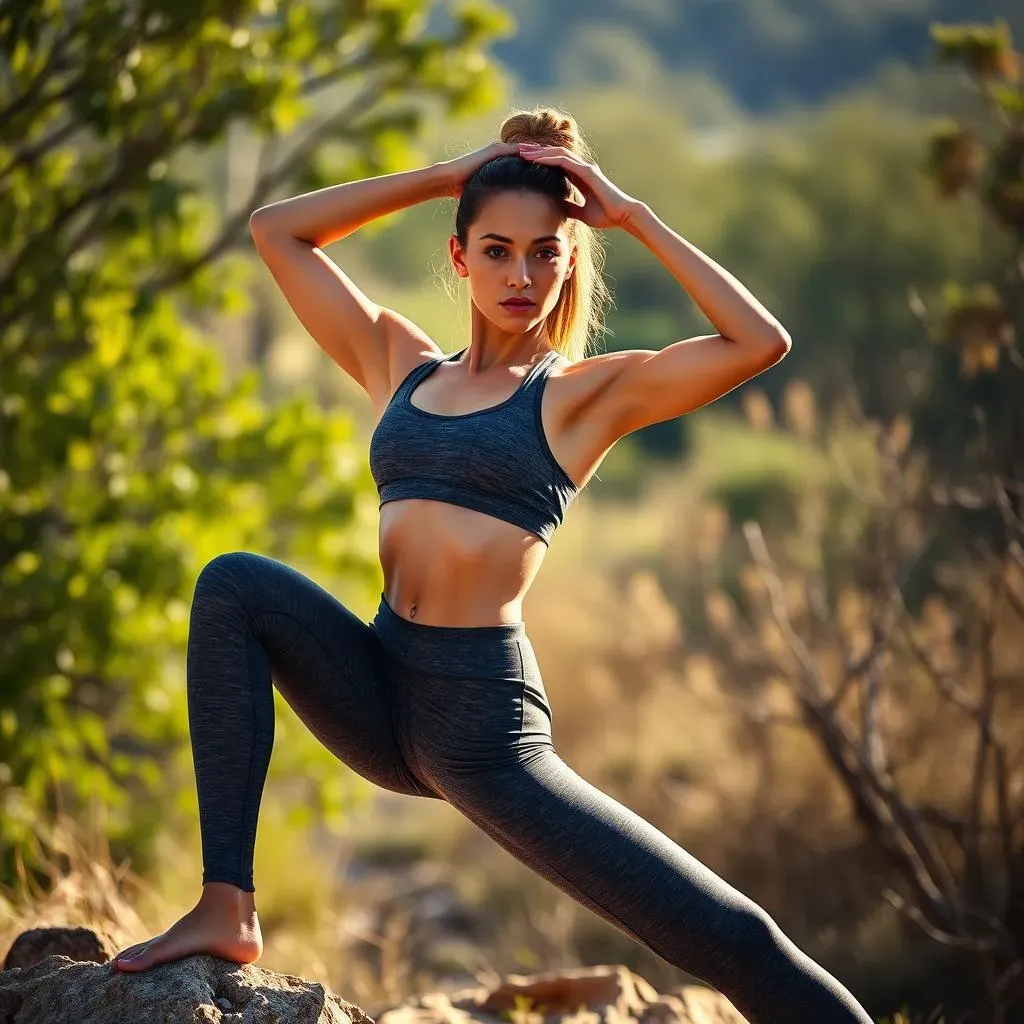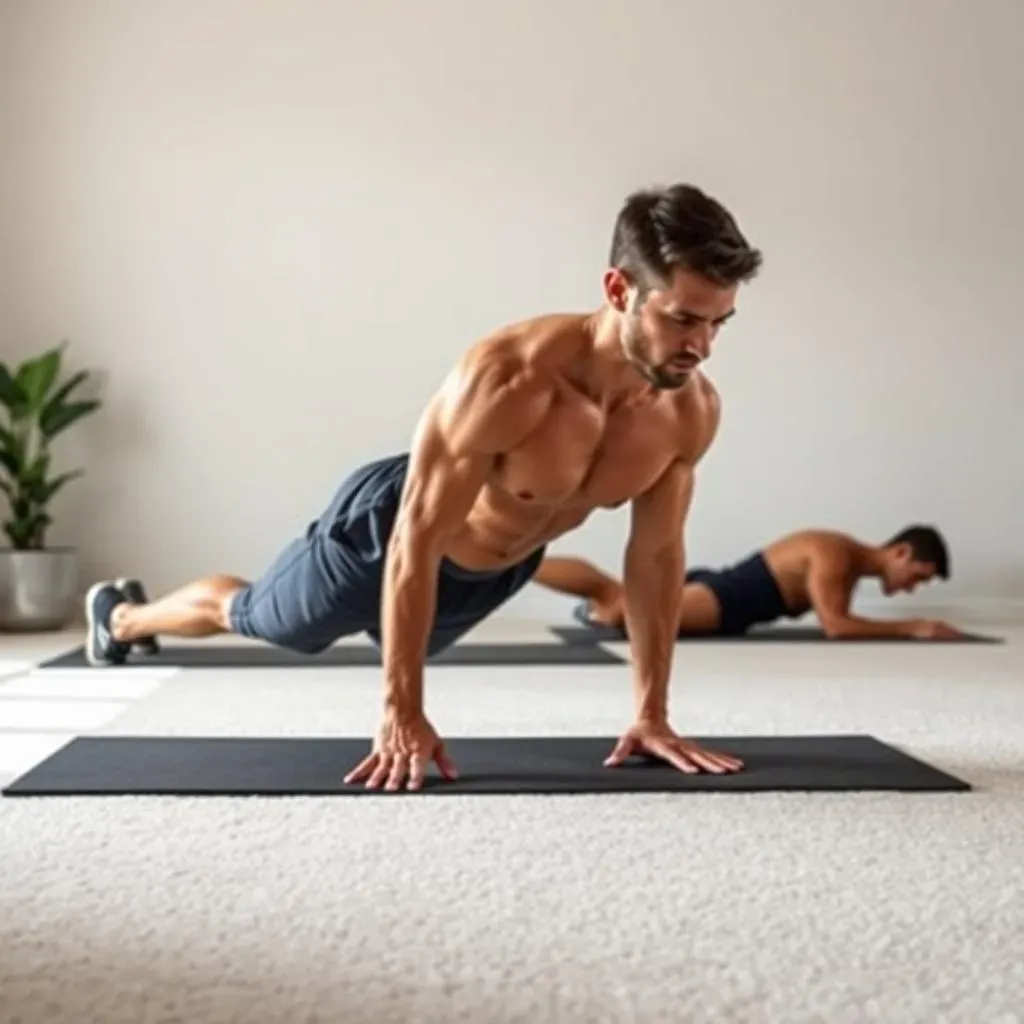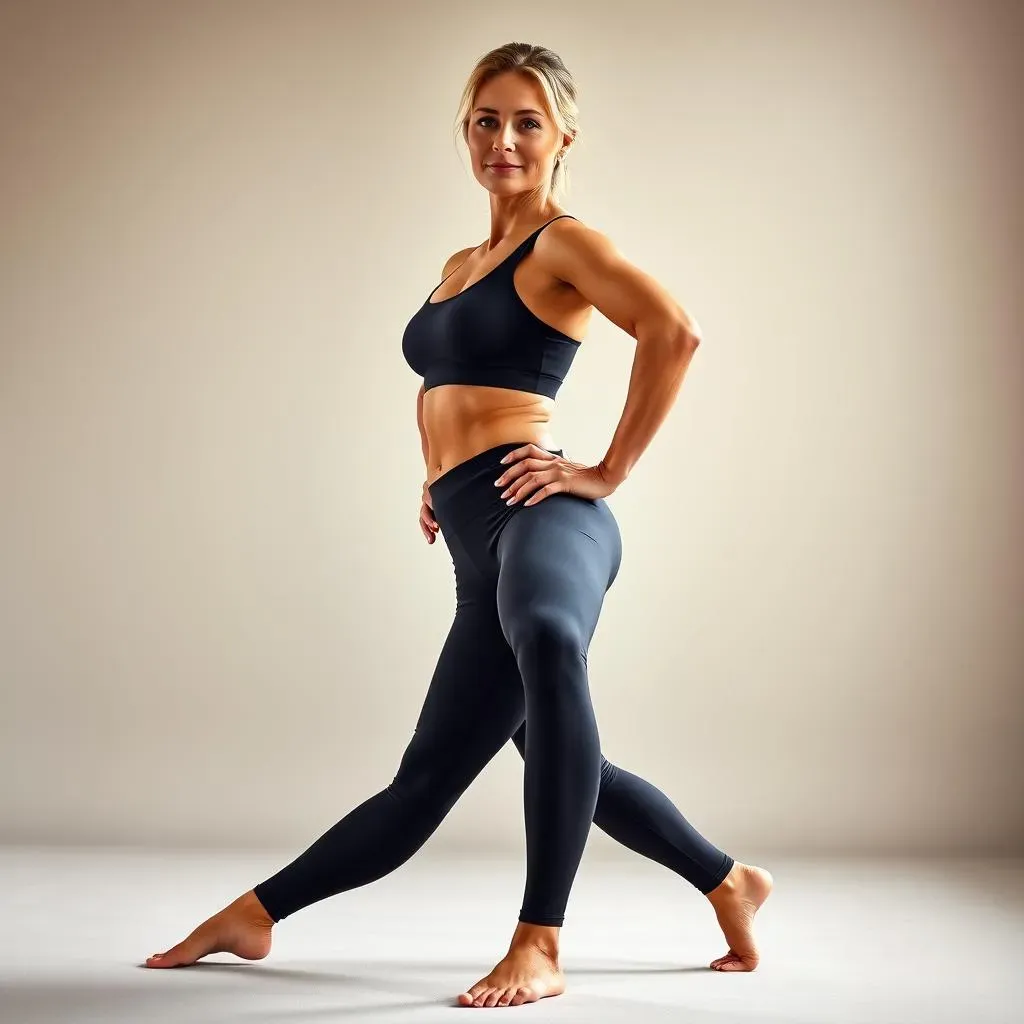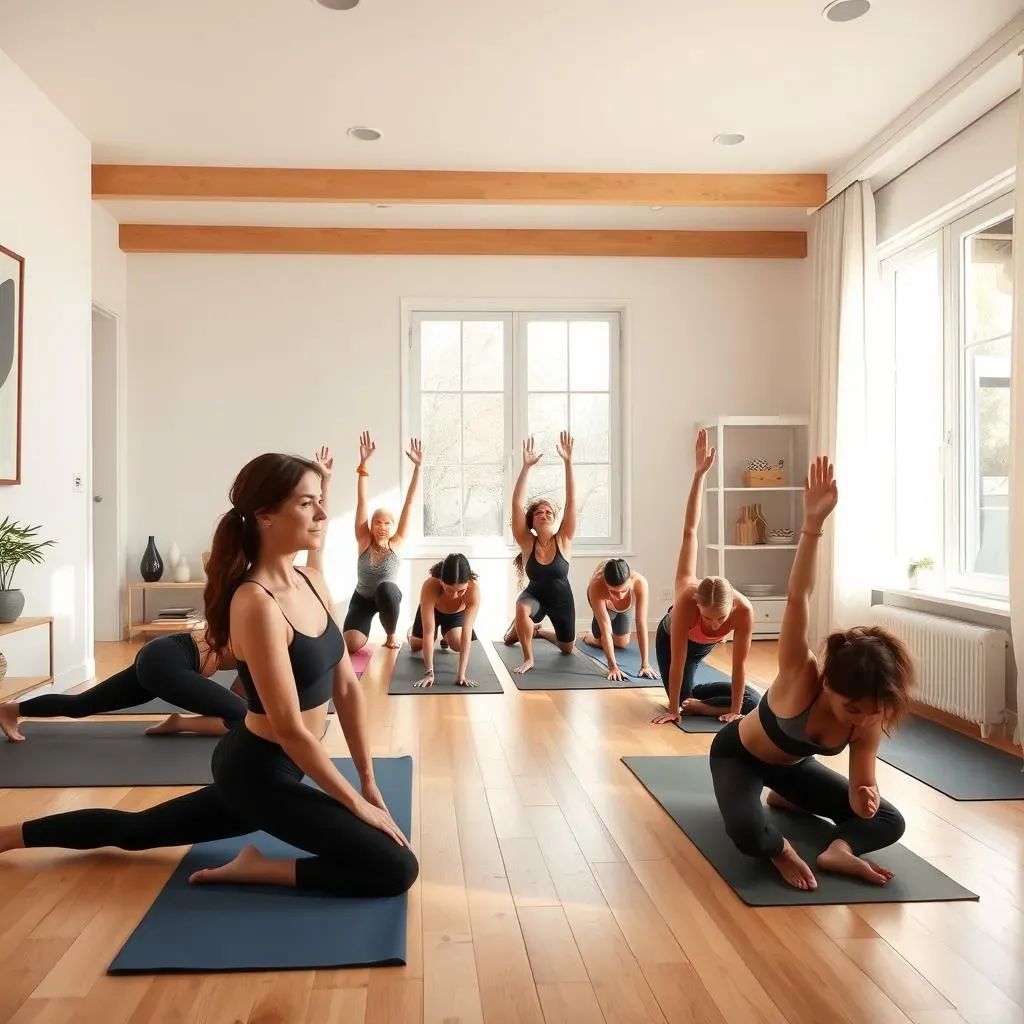Table of Contents
Ever feel like your body’s a bit… stiff? Like a rusty tin man needing a good oiling? Maybe your back aches after a long day, or you just can’t seem to touch your toes anymore. You're not alone, I've been there. The good news is, you don't need a fancy gym to fix it. This article is your guide to unlocking a stronger, more flexible you, right in your living room. We're diving into the world of core workouts at home for flexibility, showing you how to build a powerhouse center while increasing your range of motion. Forget those complicated routines and expensive equipment. We'll break down why core strength and flexibility are important, then we'll go through some simple, effective exercises. We'll also look at how to put everything together into a routine you can actually stick with. Get ready to feel the difference!
Why Core Strength and Flexibility Matter

Why Core Strength and Flexibility Matter
The Core: More Than Just Abs
Okay, let's be real for a sec. When people think "core," they often picture a six-pack. But your core is so much more than just those surface muscles. It's the powerhouse of your body, a complex group of muscles that wrap around your torso and spine. Think of it like the trunk of a tree. A strong trunk means you can move freely and powerfully, and it provides stability for everything you do. This includes walking, bending, and even just sitting at your desk. It's the foundation for all your movement, and when it's weak, everything else suffers. You might experience back pain, poor posture, and even difficulty with everyday activities. So, building core strength isn't just about looking good; it's about feeling good and moving well.
Flexibility: The Underestimated Superpower
Now, let's talk about flexibility. It’s often overlooked, like that quiet kid in class who turns out to be secretly brilliant. Flexibility isn't just about being able to do the splits or touch your toes. It's about having a full range of motion in your joints. When you're flexible, your muscles can move freely, reducing your risk of injury and improving your overall performance. Tight muscles can pull on your joints, causing discomfort and pain. Think of it like this: a stiff rubber band is more likely to snap than a flexible one. Flexibility helps you move more easily, reduces muscle imbalances, and improves your athletic performance. It's a game-changer for your body.
Benefit | Why It Matters |
|---|---|
Strong Core | Improves posture, reduces back pain, enhances stability |
Good Flexibility | Reduces injury risk, increases range of motion, improves performance |
The Dynamic Duo: Core and Flexibility Working Together
Here's the real magic: Core strength and flexibility aren't separate entities; they're a dynamic duo. They work together to create a body that's not only strong but also resilient and capable. A strong core provides the stability you need to move with control and power, while flexibility allows you to move through a full range of motion without restriction. Imagine trying to do a squat with a weak core and tight hamstrings – it's not pretty, and you're much more likely to get injured. But when your core and flexibility work in harmony, you unlock your body's full potential. It's like having a well-tuned engine and a smooth, aerodynamic body. You can go further, faster, and with less effort. It's about building a body that's not just strong but also agile and adaptable.
Essential Core Exercises for Home

Essential Core Exercises for Home
Alright, let's get to the good stuff: exercises you can do right now, in your living room, to build that powerhouse core. Forget those fancy gym machines; we're going back to basics. These aren't just your run-of-the-mill crunches (though, we'll touch on those too). We're talking about movements that engage your entire core, from your abs to your lower back, and everything in between. The beauty of these exercises is that you don't need any equipment, just a bit of space and your own body weight. Think of it like this, your body is your own personal gym, always available and ready for a workout. We're going to hit all the major muscles, and I'll walk you through how to do them right, because form is key, my friend.
We'll start with the plank, a true classic for a reason, it is like the Swiss Army knife of core exercises. It works your whole core, from your shoulders to your toes. Then we’ll move on to bird dogs to challenge your balance, and we’ll also do some dead bugs, because who doesn't love a bug-themed workout? We'll also look at some modified crunches, because, let's face it, sometimes you just want to crunch. But don't worry, we'll make sure you're doing them properly and safely. We'll also be adding some twists and rotations to work the obliques, those muscles on the side of your core. It's not just about going straight up and down, we need to challenge those side muscles too. And don't worry, I'll give you modifications for each exercise, so whether you're a beginner or a seasoned pro, you can find your level of challenge.
- Plank: A classic for a reason!
- Bird Dog: Great for balance and core strength.
- Dead Bug: A fun way to engage your deep core muscles.
- Modified Crunches: Because sometimes you just gotta crunch.
- Rotations: To hit those obliques.
Flexibility Moves to Complement Your Core Work

Flexibility Moves to Complement Your Core Work
Why Flexibility is Your Core's Best Friend
So, you've got your core exercises down, huh? That's awesome! But here's the thing: a strong core without flexibility is like a race car with stiff suspension. You've got the power, but you can't use it to its full potential. Flexibility allows your muscles to move through their full range of motion, reducing the risk of injury and improving your overall movement efficiency. Think of it as the oil that keeps your joints moving smoothly. Without it, things get creaky and stiff. And let's be honest, nobody wants to move like a rusty robot. So, flexibility isn't just an add-on; it's a crucial part of your core fitness journey.
Simple Stretches for Maximum Impact
Now, let's talk about some simple stretches you can easily incorporate into your routine. We're not talking about crazy contortions here; just gentle, effective movements that will make a big difference. We will start with the classic hamstring stretch, because who doesn't have tight hamstrings? It's like everyone's default setting. Then, we'll move on to a hip flexor stretch, because those muscles get super tight from sitting all day. A gentle quad stretch will help to keep your legs balanced, and we’ll finish with a few twists to work your spine and obliques. It's like giving your muscles a well-deserved hug after all that core work. And remember, the goal isn't to force anything; it's to move gently and with control, listening to your body every step of the way.
Stretch | Target Area | Why It's Important |
|---|---|---|
Hamstring Stretch | Back of thighs | Reduces tightness, improves lower back health |
Hip Flexor Stretch | Front of hips | Counteracts sitting, improves posture |
Quad Stretch | Front of thighs | Improves leg flexibility and balance |
Spinal Twists | Spine and Obliques | Increases mobility, reduces tension |
Putting it all together
Integrating these stretches into your routine is super easy. You can do them before your core workout to warm up your muscles, or after to cool down and increase flexibility. I like to do a few minutes of stretching every day, even on my rest days, because it helps keep everything loose and mobile. It's like giving your body a little maintenance check-up. And remember, consistency is key. It's not about doing one long stretching session once a week; it's about doing a little bit every day. So, start small, be patient, and you'll be amazed at how much difference a few simple stretches can make. It’s a marathon, not a sprint, so just enjoy the process and celebrate the small wins.
"The only way to do great work is to love what you do." - Steve Jobs. I think this quote can be applied to your fitness journey too; you are doing great!
Putting It All Together: Your Home Core & Flexibility Routine

Putting It All Together: Your Home Core & Flexibility Routine
Creating Your Personalized Routine
Okay, so you've got all the pieces, now it's time to put them together into a routine that works for you. This isn't about some rigid schedule you have to follow to the letter. Think of it more like a flexible framework that you can adapt to your own life, your own goals and your own energy levels. The key here is consistency, not perfection. Start by picking a few core exercises and a few stretches that you like and that feel good in your body. Don't try to do everything at once; start with 2 or 3 exercises and add more as you get stronger. You can do this 2-3 times a week, with a day of rest in between to let your muscles recover. It’s like building a house, you start with the foundation and then build up the walls. Remember, it’s your fitness journey, so make it your own.
A good way to structure your routine is to start with a gentle warm-up, like some light cardio or dynamic stretches. Then, do your core exercises, focusing on proper form and controlled movements. After that, you can move on to your flexibility stretches, holding each stretch for about 30 seconds. You could also break it up during the day, do a few stretches when you wake up, a few core exercises in the afternoon, and a few more stretches before bed. The beauty of this home routine is that you can fit it into your day however it works best for you. The most important thing is that you find a rhythm that you can stick with. It's about creating sustainable habits, not quick fixes. And remember, listening to your body is always key. If you're feeling tired or sore, take a break and rest.
Sample Weekly Schedule
Here's a sample weekly schedule to get you started. Remember, this is just a suggestion, so feel free to adjust it to your own needs and preferences. The most important thing is to be consistent and to listen to your body. If you need an extra rest day, take it! It is better to take one step back, and two steps forward.
Day | Activity |
|---|---|
Monday | Core Workout + Flexibility |
Tuesday | Rest or light activity |
Wednesday | Core Workout + Flexibility |
Thursday | Rest or light activity |
Friday | Core Workout + Flexibility |
Saturday | Rest or light activity |
Sunday | Rest or light activity |
